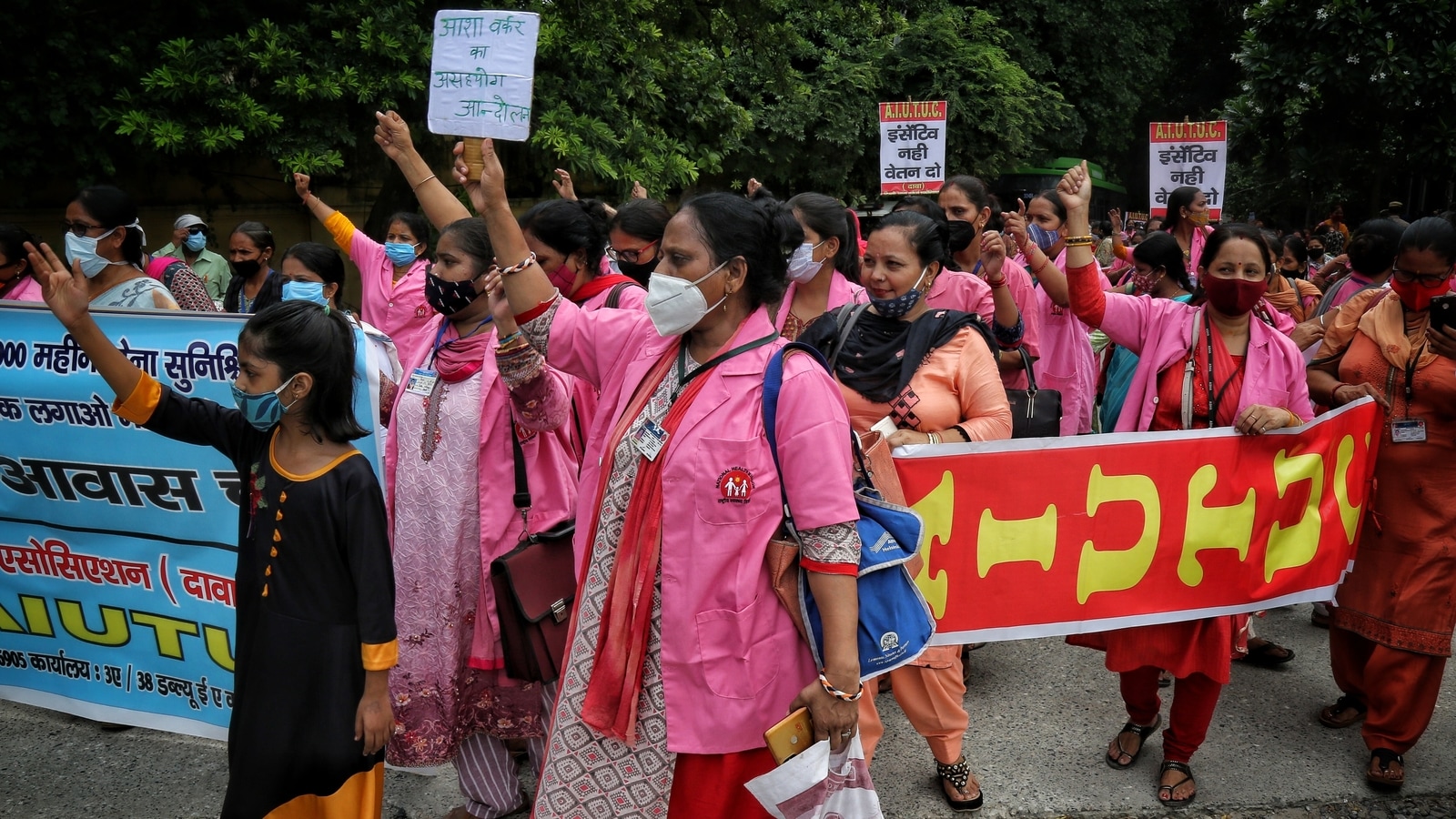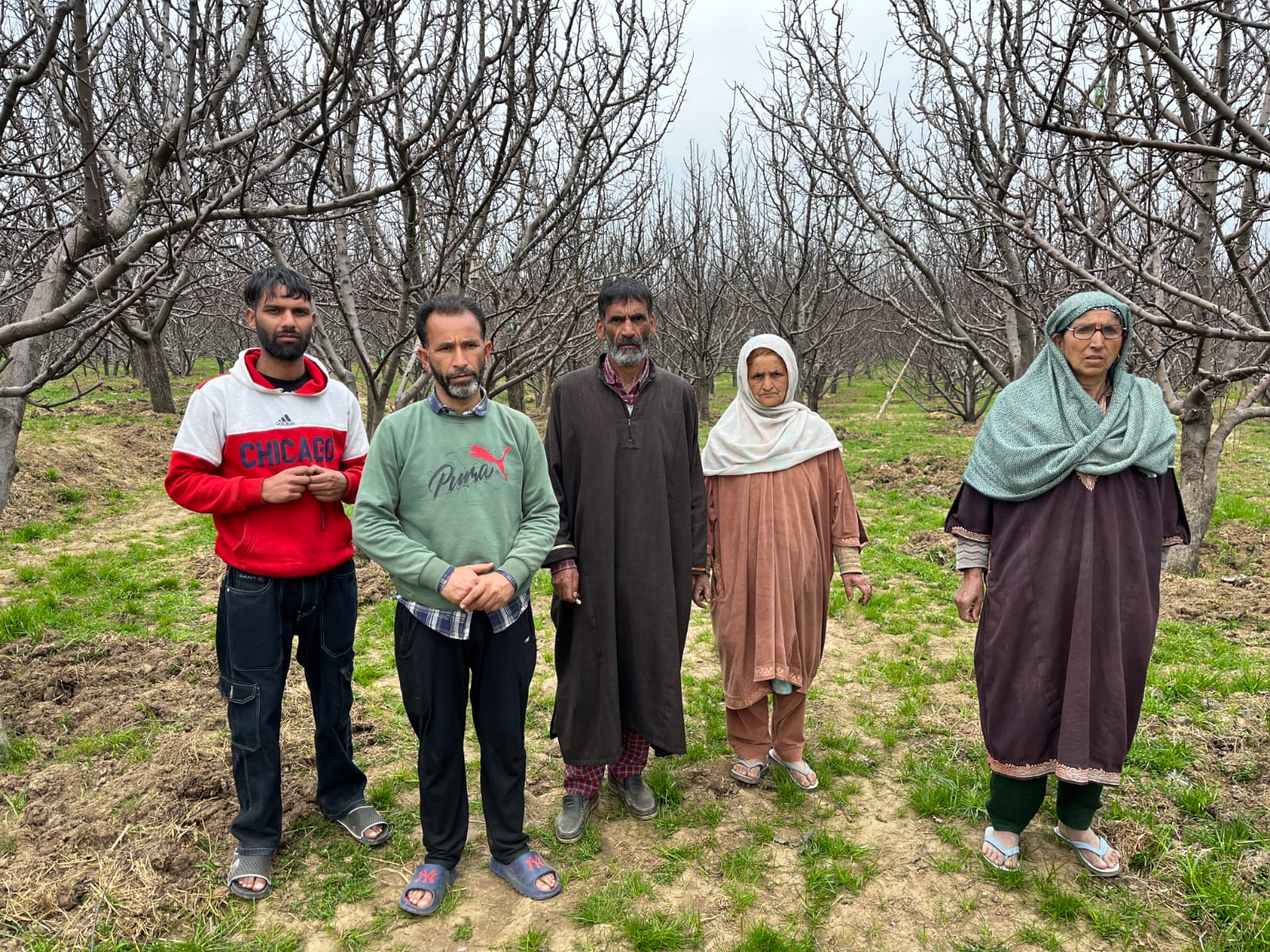On a chilly winter day in January, 22,000 Anganwadi workers and helpers gathered at Vikas Bhavan on Delhi’s Civil lines with only one thing to say — they were going on indefinite strike till their demands were met. After continuing their strike till January 31st, with increasing pressure, threats and intimidation from their departments, the workers took out a rally from Rajghat to Delhi Secretariat on March 8th, otherwise celebrated as International Working Women’s Day.
This is not the first time that Anganwadi workers have protested for the redressal of their grievances and recognition for their work. There have been many such demands over the years but to no avail. The protests by the Anganwadi Workers in March of this year have brought to fore the irony that, as we celebrate the historical achievements of the women’s labour movement, we are yet to recognise the key actors who carry the disproportionate burden of providing state welfare to the most underserved populations.

While reading about the strikes by the workers and the intimidation being met out to them, we were reminded of similar events reported in 2017 in Lucknow city of Uttar Pradesh. This led us to conduct an in-depth field-based study on the gendered identity of Anganwadi workers in Lucknow, where we interviewed them about their lives, wishes, aspirations and demands. The commonality between 2018 and 2022 can be seen not only in the apathetic response of the State but also in the resilience of these women.
While reading about the strikes by the workers and the intimidation being met out to them, we were reminded of similar events reported in 2017 in Lucknow city of Uttar Pradesh. This led us to conduct an in-depth field-based study on the gendered identity of Anganwadi workers in Lucknow, where we interviewed them about their lives, wishes, aspirations and demands. The commonality between 2018 and 2022 can be seen not only in the apathetic response of the State but also in the resilience of these women.
Who are the Anganwadi workers, why are they important and why are they on strike?
The institution of the “Anganwadi” lies at the heart of India’s flagship welfare scheme termed the Integrated Child Development Scheme (ICDS). Initiated in 1975, this programme is one of the largest of its kind, catering to the needs of women and children in terms of alleviating malnutrition, pre-school education, and providing maternal healthcare facilities and immunisation. The Anganwadi worker (Anganwadi Worker) is the key agent and the main bridge between the services put forward by the State and the beneficiaries who make use of them.
The minimum qualification required to be an Anganwadi Worker is having completed matriculation between the age of 18-35 years, but in recent times, these positions are being also filled by graduates, postgraduates, teachers and other workers who are unable to find employment in a fractured and jobless economy. The Anganwadi Worker works for over 12 hours a day, but the disparity between their wage and their working hours is glaring. They are regarded as a “voluntary worker”, thereby receiving an honorarium instead of a wage. This honorarium varies from State to state, roughly ranging from INR 4000 to INR 10,000.
This lack of recognition and dismal wages under the garb of “voluntary work” has been a point of contention between Anganwadi Workers and the State since 2015. Furthermore, the lack of social entitlements and delayed payments add to their woes. These challenges have been exacerbated during the pandemic with Anganwadi Worker, along with ASHA workers, being at the forefront of health surveillance and health service delivery for the State. Reports have revealed the increased vulnerability to infection faced by these workers owing to the door-to-door nature of their services without adequate provision of masks and sanitisers.
The minimum qualification required to be an Anganwadi Worker is having completed matriculation between the age of 18-35 years, but in recent times, these positions are being also filled by graduates, postgraduates, teachers and other workers who are unable to find employment in a fractured and jobless economy.
The services that these workers provide, more than often, go above and beyond their job roles but with no guarantee of remuneration. In 2015, the government had asked the Anganwadi workers to conduct a census of Aadhaar cards at a salary of 1500 per day, but that money has not reached the workers even today. Apart from that, every year, the workers spend money from their own pockets to make the arrangements for the much-publicised Poshan Maah (Nutrition Month).
In 2017, after a series of sit-ins and protests by the workers, the government had promised to increase the honorariums of workers by Rs 1500 and those of workers by Rs 700, but this has hardly materialised. Furthermore, unfair termination of workers and a highly hierarchical system have been the other issues which the workers are bringing to the forefront through their agitation.
The historical devaluation of care work and the notions of gendered work
The challenges described herein cannot be seen in isolation. There are larger structural forces at play, such as the historical undervaluation of care work. Care work can be unpaid care work as performed by women in a familial context or paid care work as done by nurses, health workers, crèche workers, etc. Care work is largely thought to be located within the context of the family, and paid care work is often ‘invisibilised’ because of the nature of work, the gender of the workers and the perceived “low” level of the economic contribution made by care workers. (Palriwala & Neetha, 2010).
The Anganwadi Worker works for over 12 hours a day, but the disparity between their wage and their working hours is glaring. They are regarded as a “voluntary worker”, thereby receiving an honorarium instead of a wage. This honorarium varies from State to state, roughly ranging from INR 4000 to INR 10,000.
Thus, care work is gendered, stemming from social and gender roles which relegate women to the private sphere of the home, associated with notions of women being “nurturing”, “sensitive”, and “emotional”.
This idea comes to be reinforced by the State in its policy-making. Indeed, there exists exploitation of women’s labour under the garb of “voluntary work”. The Anganwadi workers occupy a unique position in relation to their status as workers — they are not informal labourers, nor are they formally recognised “government workers”. Ironically, in March 2022, the LG of Delhi invoked the ESMA (The Essential Services Maintenance Act) for six months, prohibiting the Anganwadi Workers from protesting and naming them as essential workers. However, the Anganwadi Workers have critiqued this by underlining the idea that since the government does not recognise them as government workers and does not provide them adequate pay and services, they will not be forced to keep working while their demands are unmet and would challenge this in court.
This shows that the State’s perception of the Anganwadi Workers is also ambiguous; they are considered to be important emissaries of health and nutrition, yet the government abstains from providing them with proper benefits and recognition. On the one hand, the program is clearly built on the notion of women as “natural” caregivers, and on the other hand, the design is structured in such a way that it expects Anganwadi Worker to be “professional” service providers, maintaining better records for the State due to their unique position.
The challenges described herein cannot be seen in isolation. There are larger structural forces at play, such as the historical undervaluation of care work. Care work can be unpaid care work as performed by women in a familial context or paid care work as done by nurses, health workers, crèche workers, etc. Care work is largely thought to be located within the context of the family, and paid care work is often ‘invisibilised’ because of the nature of work, the gender of the workers and the perceived “low” level of the economic contribution made by care workers.
Anganwadi Workers make an immense contribution to the State. Not only are they important bridges delivering services of the State to the needy, but they also assist the State in its own surveillance and record-keeping. Reports have shown how it was the Anganwadi workers who maintained crucial health records to monitor the spread of COVID in their communities. Despite being such important government functionaries, the Anganwadi workers are one of the few workers not recognised as direct government functionaries in the administrative setup.
Also read: How The Overworked Female Anganwadi Workers Are Continuing To Fight The Odds
The idea of “honorary” work shows how the State leads to the marginalisation of a certain section of the population based on its view about care work being the “natural” domain of women. Nevertheless, the Anganwadi workers do not passively accept the State’s view of their identity but struggle vigorously to get their rights, and the protests are one example of this (Sreerekha, M.S, 2016)
An anecdote from our research in 2018 highlights that the State apathy toward Angwanwadi workers is further increased due to the fact that this is a dominantly feminine workforce. A senior trade union official says, “Women have less nuisance value. They have to go back home and look after their families. So, they cannot spend too much time protesting. They also don’t destroy public property in the way that men do. That is why the State thinks it can get away with not meeting their demands. Look at the para-teachers! They did some protests; broke some windows…and now they are employed!”
Several Anganwadi Workers agreed with this. Aamna (name changed), an Anganwadi Worker from Kakori block, recalled how the para-teachers strike, which was conducted by men, was successful in catching the attention of the State. But the State turns a blind eye to the Anganwadi Workers who are getting beaten up in lathi charges.
There is an urgent need for the State to give recognition to the workers as ‘government workers’, with adequate pay, dignified working hours and safe working conditions. The health system of India would crumble if it was not for these workers, who are the wheels driving the country forward, carrying the overwhelming burden of the State’s responsibility, albeit not recognised nor sufficiently remunerated.
Also read: The Anganwadi And ASHA Workers’ Fight Against Malnutrition
Anwesha is a social worker and can be found on Linkedin.
Nirupama is a development professional, working at the intersection of gender, development and violence. Nirupama can be found on Linkedin.
Featured image source: Newsclick




